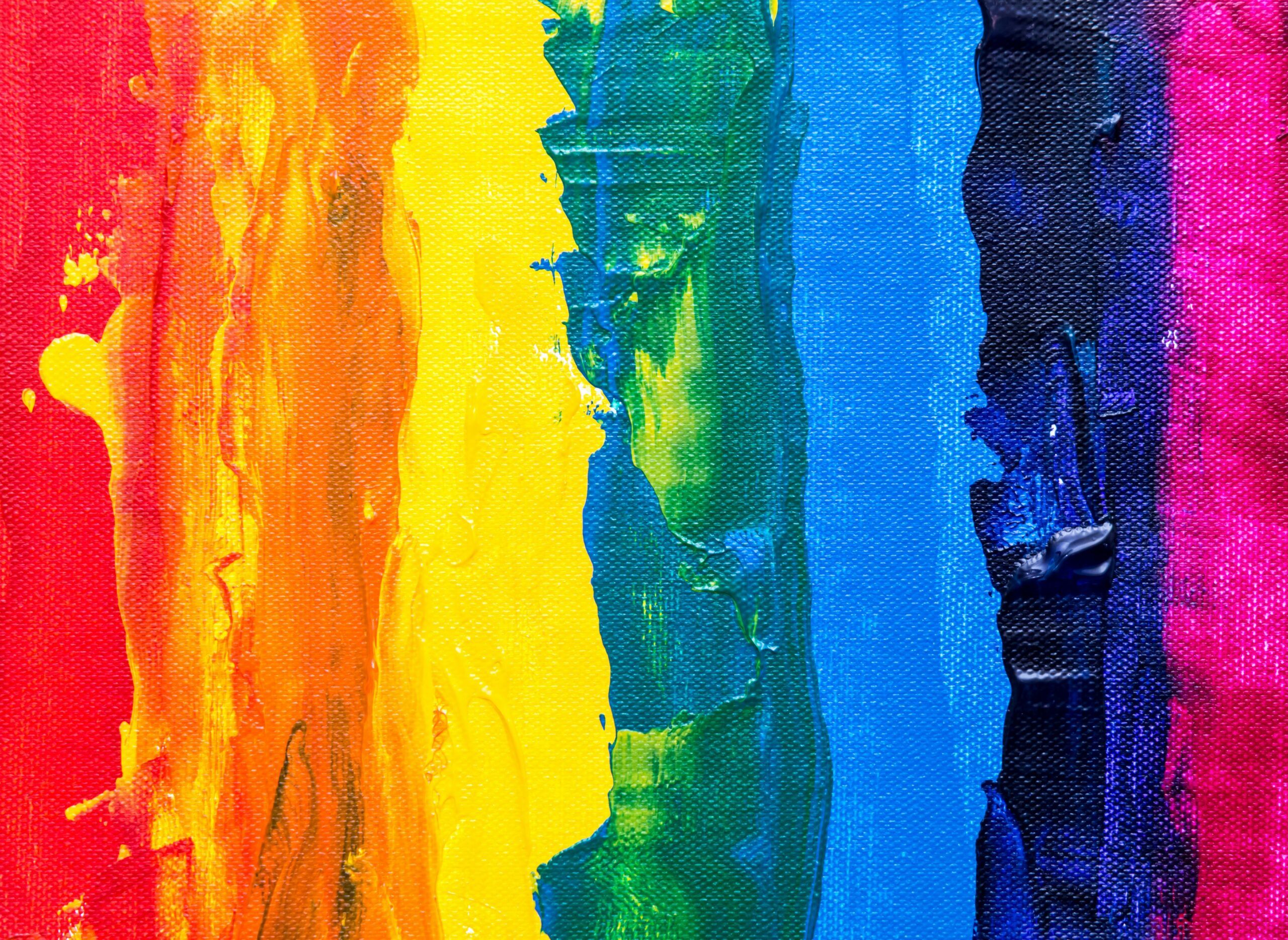Are you interested in learning how to paint but you can’t get over that little nagging voice in your head that says you’d be bad at it? Maybe you’re an experienced artist or a beginner creative still finding their feet. Or, perhaps you’re someone who joined our February Paint & Sip and wants to delve further into the beautiful rabbit hole that is learning to paint.
Whichever you are, most people are unsure about their creative skills and even shy away from it because ‘it’s not for them’ or ‘they’re not good at it’. And that mindset is the root of why many people never take the time to explore their own capabilities both creatively and professionally. Painting however, is one of many mediums that offers you plenty of opportunity to experiment, learn and be inspired.
Since we’ve got Paint & Sip happening this Valentines, we wanted to give you some tips for when you decide to pick up the brush, pencil or pen to let your artistic side out.
Table of Contents
1. Start off Fun
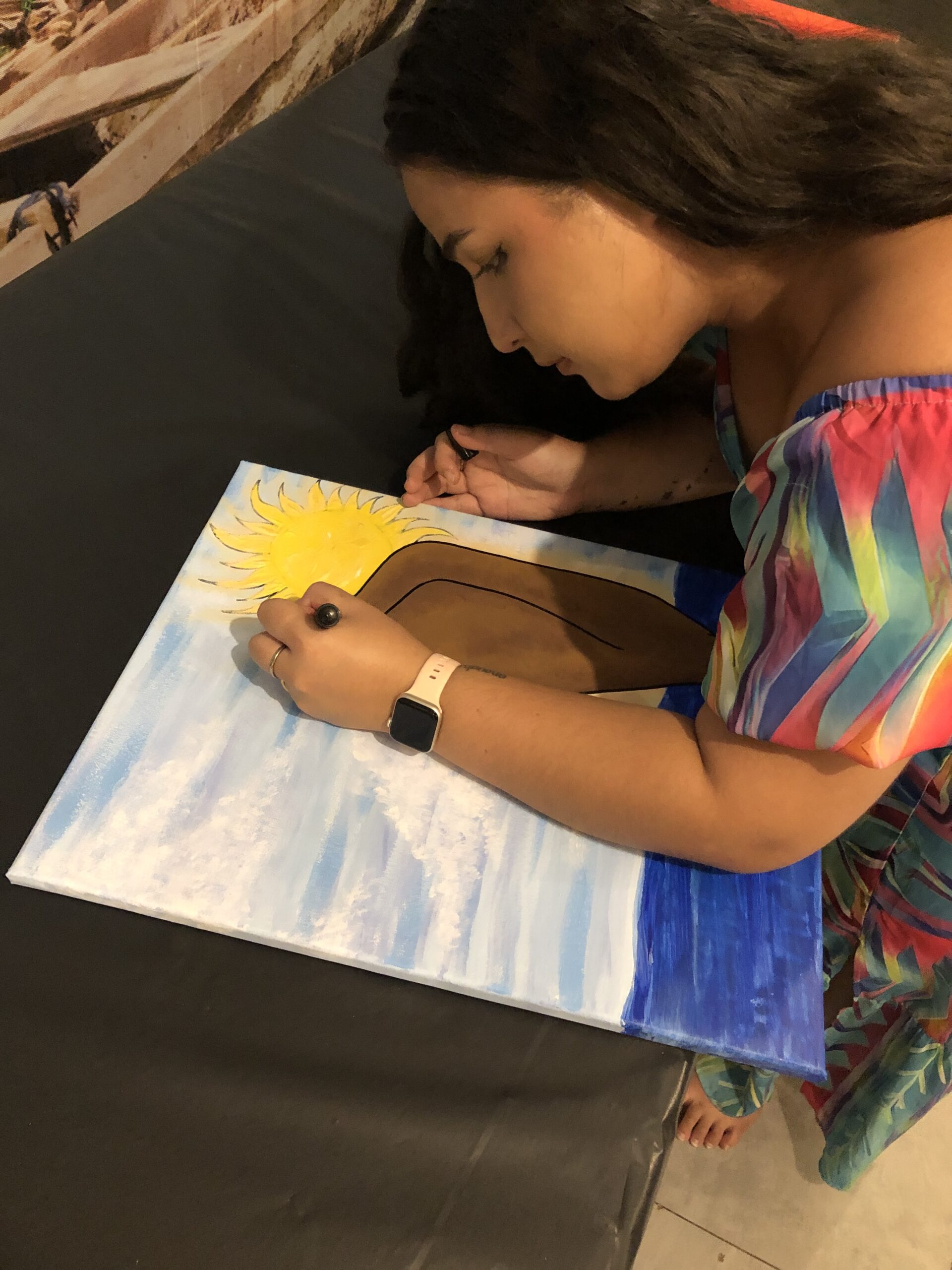
First thing you need to remember about creating and about most of your hobbies. You need to have fun! Or, at the very least have an interest. Fun doesn’t necessarily mean all smiles and tossing paint at a paper. It does whatever it is you want to do, you want to do it consistently and you want to make time for it. Fun has many definitions, but a baseline here, is that it shouldn’t be stressful in the way work and life in general can be stressful.
So when you start off painting, don’t look at diagrams and structure and paid for tutorials. Pick up the brush, look at some inspiration, then paint. Paint what you see, paint what you love. Love landscapes? Try painting one. Love anime, try painting it. It’s up to you. Doesn’t matter if you don’t think it’s any good. Who’s watching? Hobbies should be for yourself first. So indulge and let loose.
2. Pick your Poison!
There’s plenty of kinds of paint, but we’ll keep it simple at three. There’s Acrylics, Watercolour and Oils.
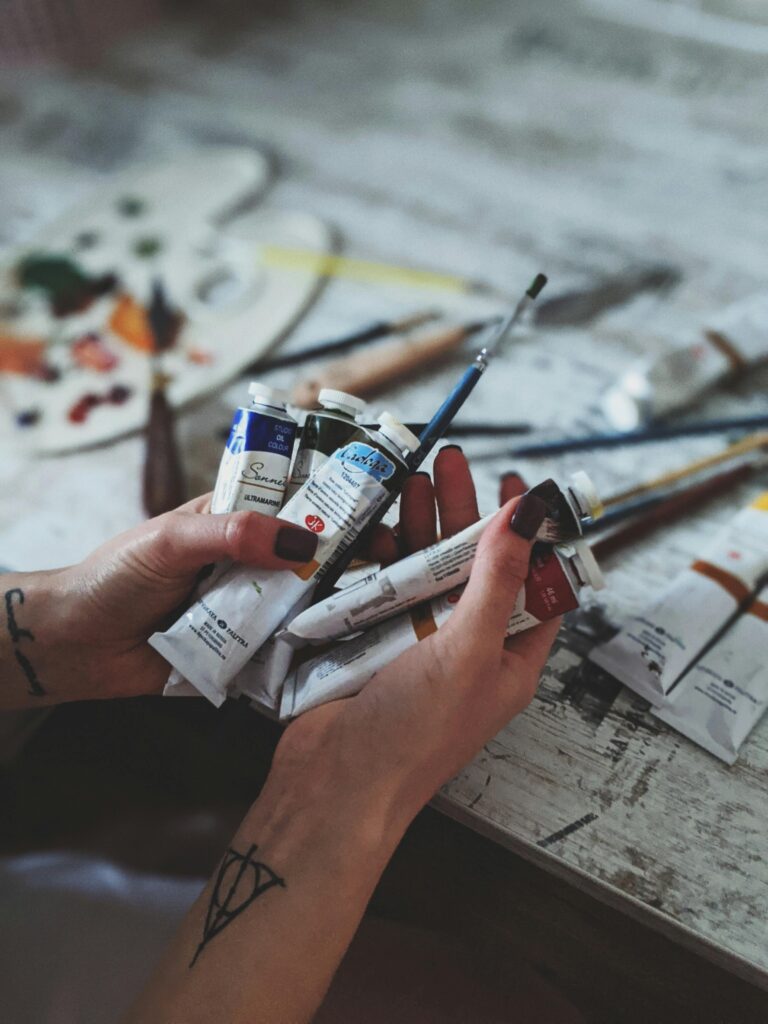
Acrylics are a very good beginner friendly paint (the same one Bob Ross uses) and they’re relatively cheap. You can do what we do here at Onelook and buy industrial grade Acrylics, then fill out some bottles to use for later. Acrylics are great because they mix easy and you can add plenty of detail, as well as use a variety of tools that aren’t brushes.

Watercolours are a little cheaper and usually more widely available. Plenty of stationery stores sell watercolour sets or they come packed alongside large scale art packs. Watercolour is less beginner friendly than Acrylics since you need to mix the paint with water and it can take some getting used to. But, it can make for a dreamy, pastel style and they can dry quickly so you’ll be able to make more paintings.

Oil painting is the slowest to dry but that means you have plenty of time to adjust, correct and add little things you want. Oil painting has been used by many masters to create amazing paintings, but it’s recommended you really take your time to learn this one. It is also necessary for you to have a mask on when you use oil painting or to have good ventilation in your painting area since oil fumes can be hazardous to your health.
These 3 mediums are a great place to start when painting. You might find yourself gravitating to one or you might find yourself enjoying all of them! Either way, these are the big three of painting and a great place to start.
3. Experiment
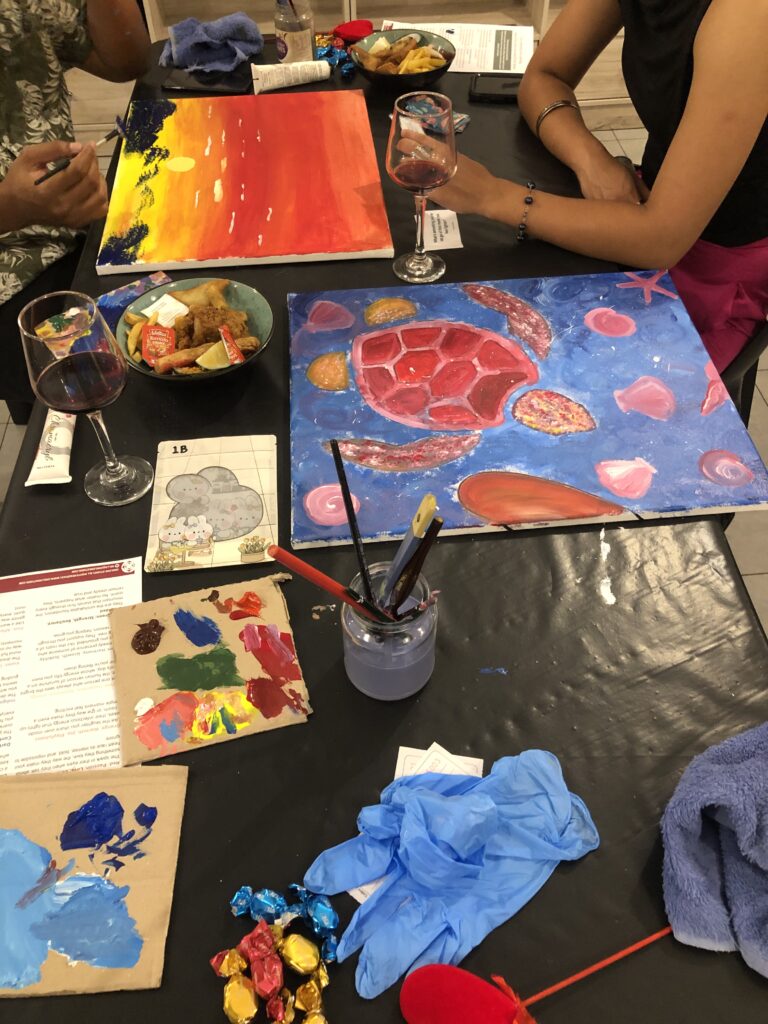
Do you remember as a child when you would just do things and see if you liked them? Same thing really. Experimentation is all about seeing what works and what doesn’t and testing the waters to see how it applies to you? Don’t like Fruit Bowls? Try painting dragons. Don’t like using colours? Try using black and white. Paint brush not doing what you want it to? Try using something else.
Experimentation also involves making mistakes. That’s the other thing, don’t worry about mistakes. Mistakes happen all the time, especially when you’re starting out. Perfectionism is the enemy of Completion. Roll with the slipups and you’ll have a better time. Paintings and art in general can be corrected or made better. But you’ll never know this without taking the time to forge ahead and roll with the mistakes.
4. Follow Through
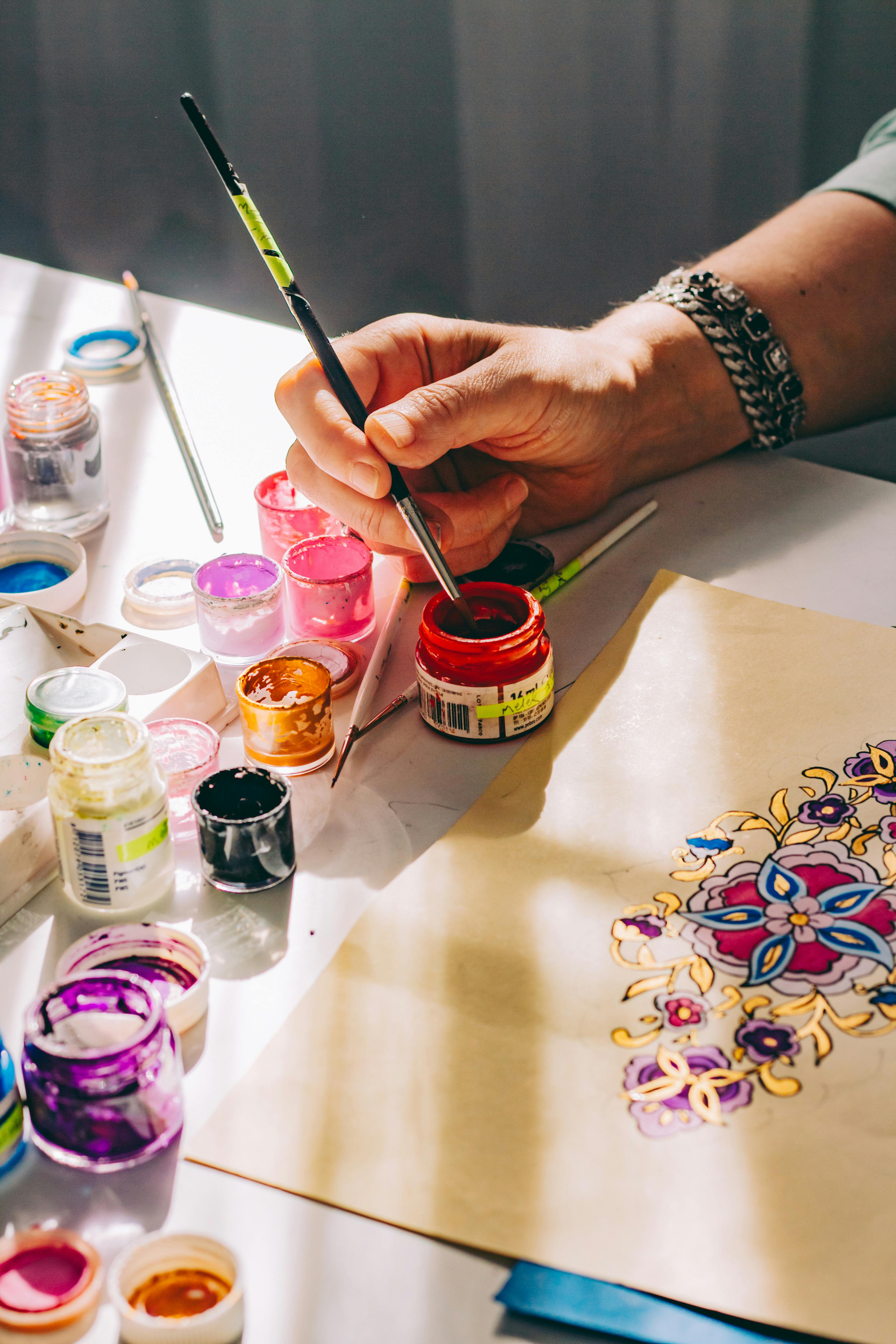
Lots of people, creatives and otherwise, suffer from a simple lie. That is “I’ll wait until I get some confidence, then I’ll do this thing”. Everyone thinks this at one point in time, but the issue with this is it’s actually the other way around. You gain confidence from doing something over and over again. Repetition and practice leads to skill which leads to confidence.
The best way to build confidence? Finish your paintings. Even if it’s something simple, finishing something gives you a) something to look back on and be proud of and b) makes you feel a sense of accomplishment.
It also builds skill on top of confidence. If you’re experimenting and taking risks and trying out new things while also finishing what you started, it creates a nice little loop where you’re rewarding yourself for going outside your comfort zone. Too often we don’t feel that pride in our lives because we work for long term goals. whereas painting is pretty short term.
Practice leads to skill, which leads to confidence.
5. Inspiration
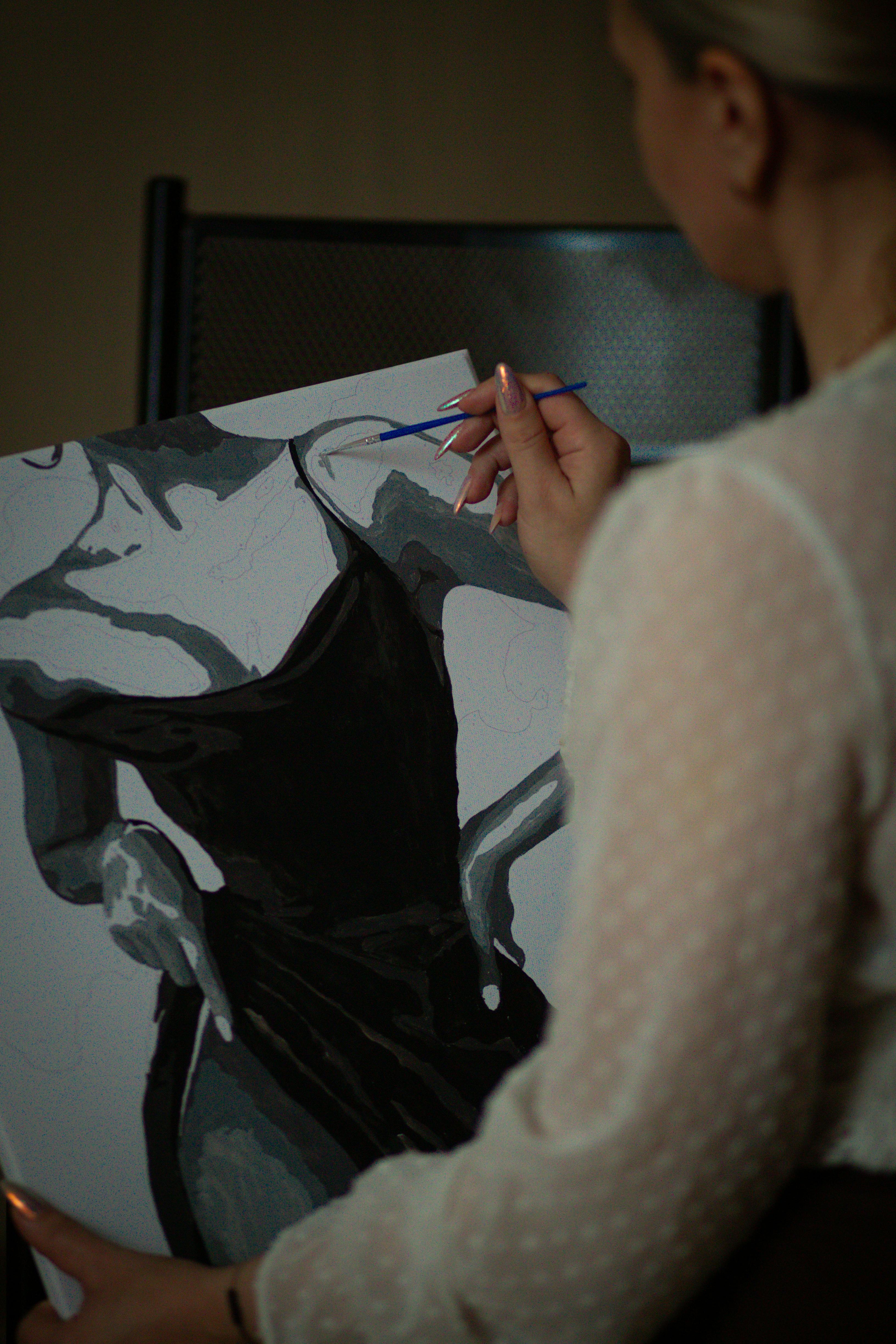
Most people can’t paint something from nothing. You have to be a master painter who’s been doing it for several years or a natural savant to be able to do so. Most people aren’t savants and which means you’re going to have to paint for a few years before being able to create from nothing.
So it’s a good thing there’s a wealth of other painters, artists and art to take inspiration from. Instagram and Pinterest offer millions of digital and traditional art, as well as photography and stills from movies. On top of that, there are thousands of extremely skilled human artists who offer tutorials and process sketches that will allow you to see how others make their work.
If you feel intimidated by the wealth of art out there, that’s fine, it’s a lot for one person to take in. But each of those artists started out not knowing one end of a brush from the other. Remember that the amazing artist you see honing their craft has been doing this for a long time and has built the intuitive skills needed to make art the way they do.
Take it as encouragement!
Don’t Think, Just Do
Painting is not just for stuffy Victorian artists and people who live in studio apartments. Painting is one of the many ways to express yourself and it’s something that’s worth your time. Even if all you want is a new hobby, painting lets you show yourself how you really see the world. It’s an exciting and messy thing to find out how much you love this art form and even if it doesn’t quite do it for you, it might inspire you to try other things like dance or singing or sketching or even just get you to try that thing you’ve wanted to do for a while.
So don’t think, just do!

